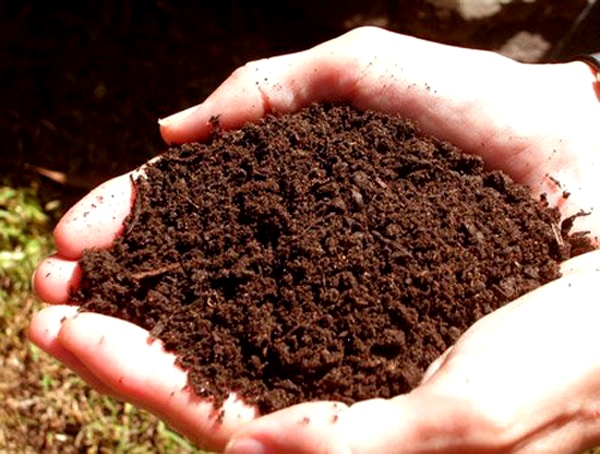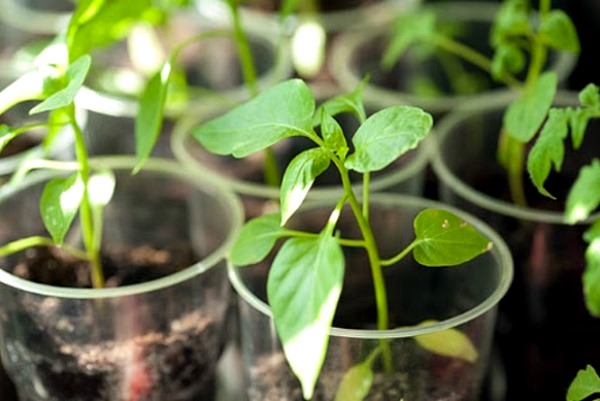Growing pepper seedlings at home
Growing pepper seedlings at home is not a difficult task. For good yields, you need to know the intricacies of watering, temperature fluctuations and how to correctly and successfully transplant plant stems so that they do not become coarse.
Content
Seedling preparation time
The most optimal period for sowing seedlings are the days from February 20 to March 10. So, as in pepper, the fruits begin to ripen 100-150 days after the shoots have appeared, and the seedlings must be planted at the age of 60 to 80 days. If you know the characteristics of the variety, then you can independently calculate more accurate sowing dates.
Seed preparation
Initially, all seeds should be inspected and damaged or frail seeds should be removed. Then the pepper seeds you have selected need to be processed to prevent fungal infections. To do this, put them in a small gauze bag, soak them in a fungicide solution (for example, "Maxim", "Vitaros" or "Fitosporin-M") using the instructions. There is also another way: for 20-30 minutes, the seeds must be soaked in a dark pink solution of potassium permanganate, after which they are thoroughly washed in bags. Soaking pepper seeds in Epin for 12 hours can give a pretty good result. To do this, you need to make a solution with a ratio of 1-2 drops of water per 100 ml of water. After that, you need to do the following:
- spread the seeds so that they are between two layers of a damp, clean cloth;
- cover them to retain moisture;
- put the seeds in place with a constant temperature of + 25 ° C.
IMPORTANT! After 1-2 weeks, the seeds will pick up and therefore this moment should not be missed since the roots of the peppers are rather fragile and unable to tolerate damage of any nature.
Seedling substrate
To grow high-quality pepper seedlings, it is necessary to prepare sufficiently fertile soil. That is why the substrate must be prepared very carefully and carefully. To begin with, it must be said that the land from the garden is not very suitable for preparing the substrate, and especially if it has high acidity, it is clayey and heavy. The soil should be moisture-absorbing, loose, contain the required amount of nutrients, have a neutral reaction and be free from pests and pathogens. In such a case, many gardeners and summer residents have their own recipe for preparing potting soil. An example of this is a commonly used mixture of humus, turf and beach sand. The proportions of the substrate, respectively: 3: 3: 1. An alternative to sod land can be peat. Then add a glass of wood ash to a bucket of this mixture. For novice summer residents, in order to avoid failures, special soil is sold in specialized stores. For example, a highly nutritious substrate "Biogrunt", which can be purchased at any gardening store.
Sowing
The sowing dish must be pre-rinsed in a solution of potassium permanganate, then filled with the prepared substrate and slightly compacted so that it is about 2 cm from the soil to the edge of the dish. see No need to sow the seeds thicker, because, as a result, pepper shoots can shade each other and, as a result, stretch out. Then you need to fill a layer of soil mixture from above with a height of about 1 to 1.5 cm.Then tighten again a little. Watering requires special attention and care so that the pepper seeds do not wash out to the surface of the soil. Then assign notes with the names of the varieties to the containers with the crops. To retain moisture as long as possible, crops are placed in a greenhouse. The constant temperature should be + 25 ° C. A week later, shoots appear. You should adhere to certain rules for caring for them:
- Place crops in a bright place, the temperature of which will be + 15-17 ° С;
- Watered with warm water should be sparingly and be sure to ensure that it does not accumulate inside the pan;
- The container with the seedlings must be rotated all the time relative to the window so that the seedlings do not tilt (you can illuminate with a phytolamp).
Video "Sowing sweet pepper seeds"
How to prepare bell pepper seeds for sowing. Seed sowing technology. Detailed instructions, nuances, tips are in this video.
Picking and feeding
In order to avoid the risk of damage to plants, peppers dive at the stage of two true leaves without deepening or deepening only half a centimeter and no more. There is also another way: seedlings tolerate diving best at the stage of cotyledons, and therefore at this moment they can also dive. When using this method, deepening is allowed to the level of the cotyledonous leaves. Most often, this picking method is used for growing in greenhouses. But for growing at home, the first method is more suitable. 1-2 true leaves of a seedling appear after 3-4 weeks after germination. This is the most optimal for picking peppers at home. Beforehand, it is quite good to spill the soil in the container, and then wait for the water to drain onto the pallet. Since the period of development of the pepper takes a considerable amount of time, it should be dived into small pots with a volume of about 100-150 ml. In such pots, the seedlings can master the earthen ball much faster, as a result of which the earth then does not sour during watering and the roots are less exposed to rot damage. The sequence of actions when picking seedlings:
- It is necessary to carefully take the seedlings by the "ears" and then place them in the hole in the pot in such a way that the roots are there freely without bending;
- After that, you need to sprinkle the hole with a small amount of soil and compact;
- We must not forget that the root collar can only be deepened by half a centimeter;
- Watering must be done carefully and until the water is absorbed, while holding the seedling;
- The seedlings should be installed on the windowsill in such a way as to preserve them at first from direct sunlight;
- It is imperative to monitor temperature fluctuations in the pots, the permissible rate is from + 15 ° C to + 13 ° C.
Before planting in the ground, the pepper must be fed at least twice. Namely: 14 days after the pick and 14 days after the first feeding. Usually, under-edges are applied in liquid form. For ease of use, you can buy already prepared fertilizers for seedlings. Here are some of the most used ones: Agricola, Fertika Lux, Krepysh, Solvent. Start transferring seedlings into large pots (0.8 - 1 l) in late spring. The transshipment must be treated with great care and attention so that the earthen lump is preserved. In this case, the seedlings continue to grow. You can use the composition of the soil that was intended for sowing and picking. But this time it should not be sifted as with a lumpy structure, there is more access to air for the roots. Then add 1 tablespoon of double superphosphate, half a glass of wood ash to a bucket of potting soil. Wood ash can be replaced with three tablespoons of Señor Tomato Pepper and Tomato Fertilizer. For 14 days before planting in the ground, you should start hardening in the fresh air, taking into account the preservation of seedlings from direct sunlight.
Landing in the ground
It should be remembered that planting in the ground begins only when both conditions are met: a stable average daily air temperature of + 15 ... + 17 ° C and the beginning of the formation of the first buds. Cold heavy soils are not suitable for peppers, so those can be diluted with peat or humus. After that, the soil is dug to the depth of the shovel bayonet and equalized. Planting holes are made at a distance of half a meter from each other. The depth of the hole should be equal to the height of the earthen coma. Then add 1 tablespoon of complete mineral fertilizer to the hole, which consists of nitrogen, potassium and phosphorus. After that, the plant is carefully removed from the pot and placed in the hole. The hole is filled up so that the bulk of the roots becomes closed. You need to pour about the same amount of water, which is a third of the bucket. After the water is completely absorbed, part of the hole is filled with loose earth. Then the plantings need to be mulched with peat and, if necessary, tied up with bushes. At temperatures below + 13 ... + 14 ° С at night, plants should be covered in arcs with non-woven material.
Video "Diving of sweet pepper seedlings"
It is very important to dive the shoots correctly, the further development of the plant depends on this. How to do this - see this video.



